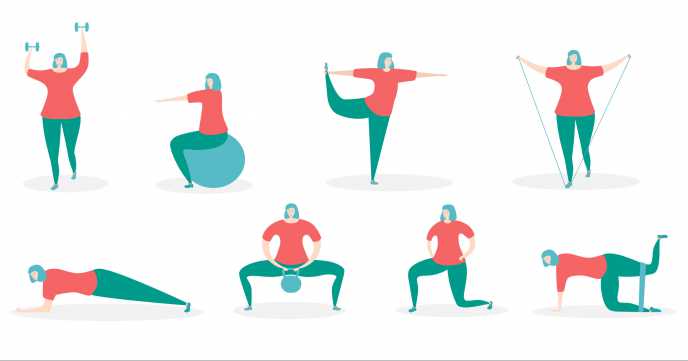Like most people, you probably started your weight loss journey with great enthusiasm. You were determined to reach your goals and finally get the body you’ve always wanted. But after a few weeks or months, that initial excitement starts to fade, and it becomes more challenging to stay motivated. This is where strength training comes in! In this blog, we will discuss the benefits of strength training and how it can help keep your weight loss journey on track.
Strength training is an often overlooked component of a successful weight loss plan. Not only does it help you build muscle and burn fat, but it helps keep your metabolism revved up and prevents plateaus in your progress. It also helps prevent injuries by strengthening the muscles around vulnerable joints like your knees, hips, and spine.
What is Strength Training?
Strength training is any type of exercise that uses resistance to increase the strength and size of muscles. This includes lifting weights, using resistance bands, doing bodyweight exercises (pushups, squats, etc.), and performing plyometric movements. When you lift weights, you put your muscles under stress. This prompts your body to respond by growing stronger to cope with the challenge, known as “muscle adaptation.” Strength training can help improve your overall health and fitness level, but it also has specific benefits for those on a weight loss journey.
Why Is Strength Training Important for Weight Loss?
Strength training is beneficial for weight loss for several reasons. First and foremost, it increases lean tissue, accelerating fat burning and metabolism. Muscle burns more calories than fat, so having more lean tissue will help you lose weight faster. If you have a higher muscle-to-fat ratio, you will have a lower overall body fat percentage. You’ll notice that your clothing sizes are getting smaller, and you have more energy.
1. Improves Metabolism – One of the main benefits of strength training is that it increases your metabolic rate. This means you will burn more calories even when your body is resting. This can help speed up your weight loss efforts and make it easier to reach your goals.
2. Builds Muscle – Another benefit of strength training is that it helps build muscle, which boosts your metabolism even further. This means you will burn more calories throughout the day, even when you’re not exercising.
3. Increases Strength – As you become stronger through strength training, you can exercise harder and longer. This can help you burn even more calories and make reaching your weight loss goals more accessible.
4. Improves Mobility – Improved mobility is another excellent benefit of strength training. As you become stronger, you will find it easier to move around and perform everyday tasks. This improved mobility can make it easier to stay active, which is essential for maintaining a healthy lifestyle and reaching your weight loss goals.
How to Incorporate Strength Training into Your Weight Loss Program
If you want to incorporate strength training into your weight loss program, there are a few things to remember. First, you should make sure your workouts are challenging. You will not see results if you’re not feeling challenged by your exercises. Second, you should choose exercises you enjoy so that you’ll stick to your program. Lastly, aim for three weekly strength training sessions, focusing on compound exercises. Compound exercises engage multiple muscle groups and are suitable for almost everyone, regardless of fitness level.
The Importance of Cardio in Weight Loss
While strength training benefits weight loss, it’s important to include cardio in your exercise routine. Cardio exercises like running, riding, and swimming can help you burn more calories and improve your endurance. Incorporating strength training and cardio into your workout routine will give you the best results.
While cardio has its merits, it may not be as effective for weight loss as strength training. In one study, participants who did aerobic exercise lost less weight than those who added strength training to their routine. That’s because cardio can cause your body to burn fat, but it also burns a high proportion of carbohydrates—the glycogen in your muscles and liver. At the same time, strength training spares your glycogen stores and instead uses fat as an energy source.
Conclusions:
The best way to lose weight and keep it off is to combine a nutritious diet with strength training. However, the right exercise program can help you in maximizing your outcomes. Choose high-intensity exercise that will push you to the next level. And make sure that you’re eating right, too. While it’s important to incorporate strength training into your exercise routine, it won’t help you shed pounds if you’re also eating too many calories.

 1-833-207-3433
1-833-207-3433
